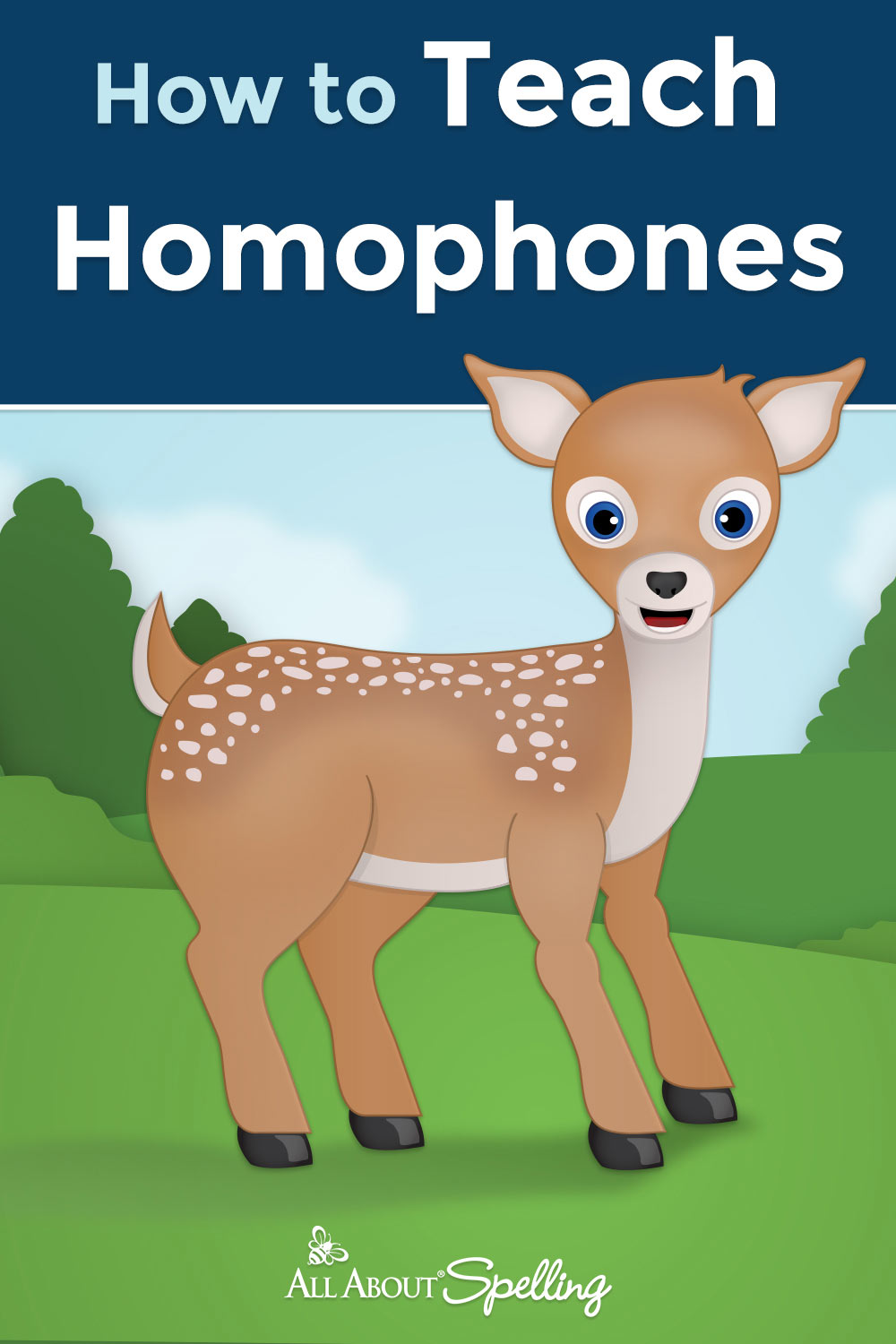

It’s a common scenario; people everywhere do it—maybe even you or your child.
You’re writing a note and are about to write the word peak . But wait! Your pencil poises midair: is it sneak peak ? Or is it sneak peek ? Now consider stationary and stationery ; they are both pronounced the same, but which one means writing paper ?
These sets of words are called homophones (or sometimes homonyms ), and they can cause a lot of trouble for spellers.
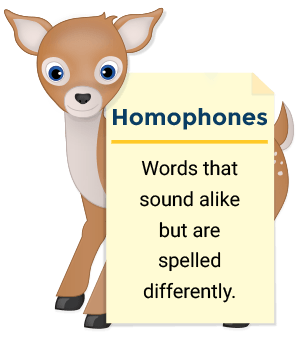
Here are a few homophone pairs: deer and dear , billed and build , and sew , so , and sow .
Homophones occur in English because there are multiple ways to spell the same sound. For example:
Good question! Let’s look at homographs first.
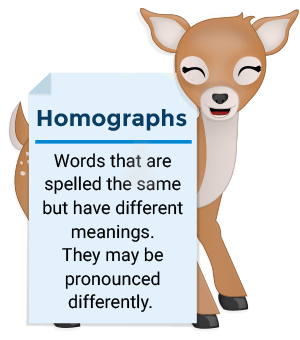
Examples of common homographs include:
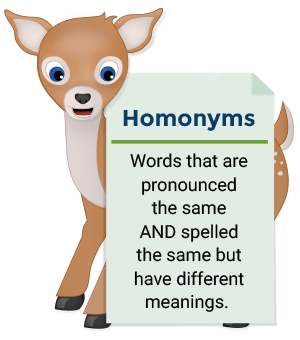
Here are some examples of homonyms:
You may have noticed that there is some overlap between the terms. For example, well and well can be categorized as both homographs AND homophones. And then there is added confusion because many people use the word homonyms when they are actually talking about homophones .
The easiest way to visualize the difference between these three terms is with a Venn diagram. Here’s a 30-second video that demonstrates the concepts.
Now that we’ve gotten the technical part out of the way, let’s see if we can help you and your children avoid homophone confusion!
First, let’s start with a list. There are LOTS of homophones. In fact, the list below contains more homophone pairs than you can shake a stick at! In order to make this list as useful as possible, words that are archaic, slang, naughty, or extremely uncommon have not been included.
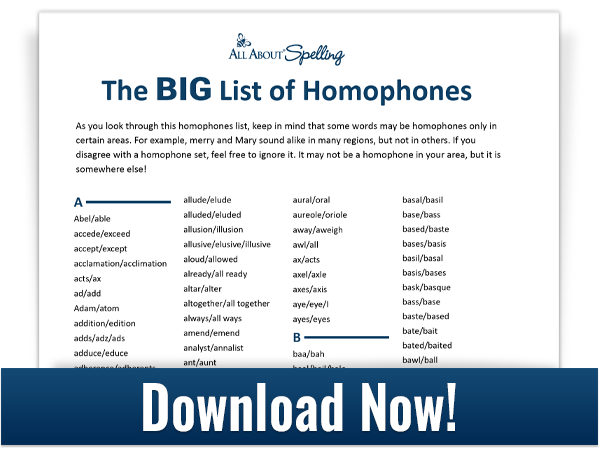
Some words are homophones in some areas but not in others. For example, in certain parts of America, weather and whether are pronounced the same, but in other regions the WH in whether has retained a distinct /hw/ sound. The words acts and ax sound alike to most of us, but some people pronounce the T in acts .
Speakers in the U.S. pronounce due and do identically, but in most British accents those words are pronounced differently. The words boy and buoy have the same pronunciation in England (and therefore are homophones), but not in America.
You can be the final judge as to whether certain word pairs are homophones in your neck of the woods.
If your child struggles with spelling, concentrating on homophone pairs is one of the most confusing things you can do. Why is that? Think about it like this: imagine you met three new people this week.

Would it be easier to remember their names if you met them all at the same time? Or would their names be easier to remember if you met them at different times, under different circumstances? Most of us would agree that it would be easier to recall their names if the meetings were spaced out a bit.
Homophones are like that: meet them all at once and they get tangled up in your brain.
Trying to tackle a homophone pair like wait and weight in the same lesson can cause confusion where there shouldn’t be any. But this simple strategy can combat the confusion:
In the case of wait and weight , teach wait first. In the All About Spelling program, we teach words containing AI long before we teach words containing EIGH – and we do so very deliberately. The vowel team AI is a much more common spelling of the long A sound than EIGH, so wait is taught sooner in the program.
After teaching the word wait , we reinforce the teaching in multiple ways until the word is mastered:
And that leads us to my #1 tip for teaching homophones:
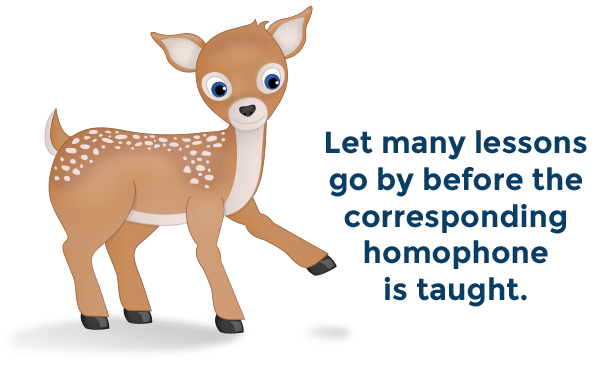
Let your student fully master the correct spelling and usage of wait before the homophone weight is introduced. By doing so, you greatly minimize the confusion and set your child up for success with homophones.
Another great way to minimize homophone confusion is to provide context for the words. When teaching the word sore , for example, you might share this interesting folk remedy:
If you have a sore throat, try this: spit into the mouth of a frog and your sore throat will be cured!
Now there’s something to talk about:
By the time the lesson is over, your child will be much more familiar with the meaning and spelling of this synonym for painful .
Of course, you can’t go into this much detail to teach every homophone, but even placing the word in a meaningful sentence goes a long way to provide clarity.
Homophones can be confusing, but they can also be fun! There are lots of ways to make learning about homophones enjoyable, such as using games, tongue twisters, graphic organizers, storybooks, and more. Check out the resources below!
Pique your child’s interest in homophones by sharing these riddles and puns. For example:
Q: What is a quick look at a mountaintop? A: A peak peek.
When a spelling word has a homophone, point it out to your student and have him add it to his own personal homophones list.
Help your child master the use of homophones the fun way!
All About Homophones gives you more than 240 pages of engaging homophone activities, homophone games, spelling resources, and teaching tools for more homophones than you can shake a stick at!
And finally, here’s a shameless plug for our All About Spelling program…
All About Spelling incorporates all the tips you’ve read about in this article.
Beginning in Level 3, the All About Spelling program teaches homophones in a way that prevents homophone confusion.
Which pairs of homophones cause your child the most difficulty? Post in the comments below!
‘There’ and ‘they’re’
Good question, Li!
Mastering homophones is a work of some time! (Most adults will still on rare occasions misuse there, they’re, and their when they are writing quickly or are otherwise distracted.)
With such confusion, it may be helpful to focus on just one of the words for a while until your student has its usage down well. Start with they’re and let your student know that it is the spelling to use for all the dictation you will do for a while. Then practice sentences that use they’re. Discuss how they are all “they are” doing something, a group of individuals.
After a couple of days of just using they’re successfully, let your student know that you will do a mix of they’re and there and that they will need to focus carefully on which are talking about a group of individuals and which are not. If is the group, then they need to see if they can say “they are” instead of “they’re.” If they can, then they know that it must be “they’re” in that sentence. If “they are” cannot be substituted, then the sentence must have “there.”
I’m thinking this will help clear things up. The word “there” is usually the tricky one, as it has so many definitions and they are so vague and allusive. Well, the definition that means “that place” is clear, but the majority of the times we use the word “there” that is not the meaning we are using. Because of the complexity of the usages of the word “there,” it is often easiest for children to learn when to use “they’re” and “their” and then learn if “they’re” or “their” don’t work, then it must be “there.”
Just keep in mind it can take a lot of time for children to master the use of homophones, especially when they are doing their own writing (like creative writing, essays, and such).
I hope this helps! Let me know if you have additional questions.